The European Radon Association is a non- profit International Organisation registered under Belgian law (number 549.923.484). The European Radon Association (ERA) has been formed aimed at serving the interests of the European radon community. The first idea of creating ERA was discussed during the International Intercomparison Exercise carried out in Ciudad Rodrigo (Spain) in May 2011. Then, ERA’s constituent assembly was held in Bouillon in May 2013 and finally the association was registered in Belgium on 19th December 2013.
The Executive Committee (2022-2023)
-
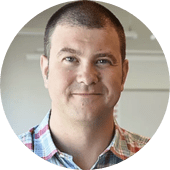 President
PresidentPer Nilsson (Driftwood Consulting AB– Sweden)
Experienced radon expert with a demonstrated history of working in the environmental services industry. Skilled in Radiation Safety, Medical Devices, Sales, Customer Relationship Management (CRM), and Dosimetry. Strong business development skills.
-
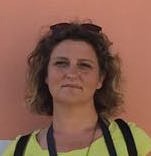 Vice-President
Vice-PresidentCarmela Carpentieri (ISS – Italy)
Carmela Carpentieri graduated in physics at “Federico II” University in Naples in 2000, studied for her PHD in high energy physics at “Albert Ludwig” University in Freiburg and post-graduated in medical physics at Pisa University. Since 2009, she has been working as a researcher of the National Center for Radiation Protection and Computational Physics, within the Italian National Institute of Health (Istituto Superiore di Sanità – ISS). Her research activities cover radioactivity, both from natural and artificial sources, from a radioprotection point of view, with a strong focus on radon isotopes. The areas of interest include measurement protocols and techniques, dosimetry, epidemiology, risk assessment, remediation and prevention, policies and regulation. She is involved in several projects national and international and also in activities within the current Italian National Radon Action Plan, as well as in developing the new NRAP according to the requirements of the 2013/59/Euratom directive.
-
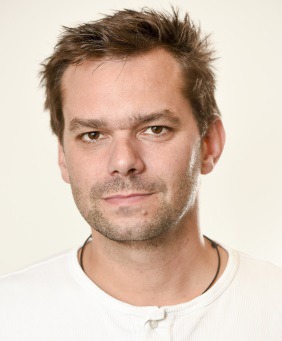 Treasurer
TreasurerBoris Dehandschutter (FANC – Belgium)
Boris Dehandschutter is active in the field of radiation protection. The research topic of his PhD (in Geology, 2001) has been the structural evolution of sedimentary basins, using among others environmental radioactivity measurements and mapping. After post-doctoral research on the geological aspects of radioactive waste disposal (fracture development and fracture permeability of argillaceous sediments), he coordinated several international projects related to natural radioactivity and its environmental impact. Since 2007 he works at the Belgian radiation protection authority (FANC) on the topics of natural radioactivity (NORM and radon). He is responsible for the national radon programme of Belgium, including radon risk mapping, radon measurement campaigns in dwellings and workplaces, radon awareness activities, training and development of regulations regarding radon.
-
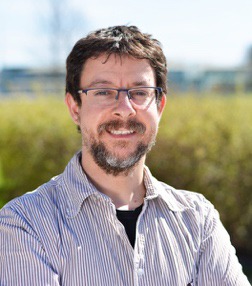 Secretary
SecretaryJosé - Luis Gutiérrez (Radonova laboratories AB – Sweden)
José – Luis Gutiérrez Villanueva is specialist radon measurement advisor at Radonova Laboratories AB (Sweden). He is a PhD. on Physics with the Thesis entitled “Radon concentrations in air, soil and water in a granitic area: instrumental development and measurements“. His research involves radon gas and natural radioactivity as well as monitoring of radioactivity at steel factories. He has expertise on metrology techniques for natural and artificial radioactivity such as gamma spectrometry, liquid scintillation counting and measurement of radon gas both passive and active methods (air, soil and water).
-
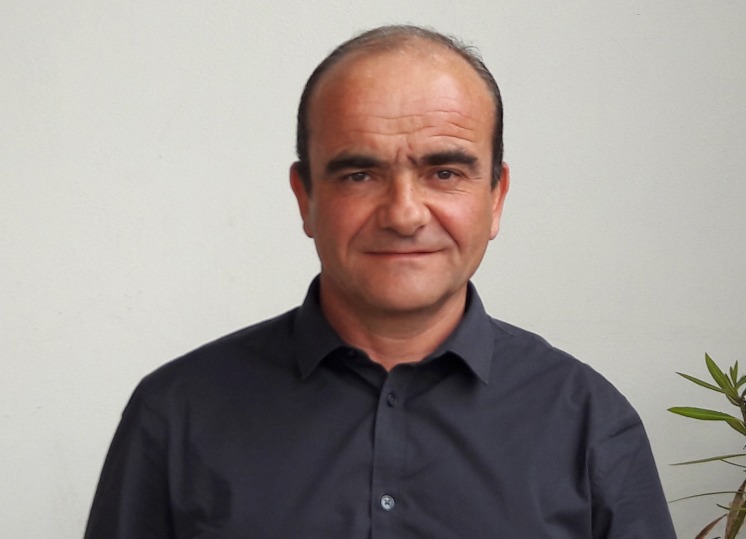
Bernard Collignan (CSTB – France)
Bernard Collignan is a Senior Research Engineer, Ph-D in the field of Fluid Mechanics and Energy. He works at the Centre Scientifique et Technique du Bâtiment (CSTB) since 1996, initially in thermal and ventilation of buildings and now in the field of Indoor Air Quality. He is involved for several years in the field of management of the impact of soil gaseous pollutants on Indoor Air Quality: industrial pollution (VOCs) or natural (radon). His work includes the development of models to study the transfer of soil gaseous pollutants to indoor environments for the characterization of indoor exposures, the development and the design of solutions to protect buildings from these pollutants, and in a more general way, as scientific and technical support for public authorities in the management of these issues and the dissemination of information to building professionals and users.
-
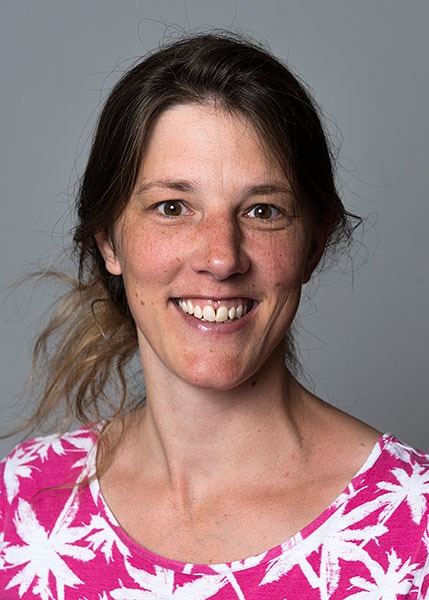
Maria Hansen (GM Scientific- UK))
Maria Hansen is the Director of GM Scientific. Maria has a PhD in particle physics, she ventured into the commercial side of passive track etch measurements. She worked for a spin-off company from Bristol university until last year, manufacturing CR-39, selling automated analysis equipment and setting up and running a radon measurement service. She has since been continuing the work with measurement laboratories, training staff, installing and maintaining equipment and provided equipment and materials when required. She has an interest in improving the materials used in the passive track etch technology to ultimately improve the measurement capability of these types of detectors to ensure the data used in research is as good as possible and the uncertainties minimised. Maria has been involved with the two radon bodies in the UK over the years; the UK Radon Association and The Radon Council before joining the ERA executive committee in 2017.
-
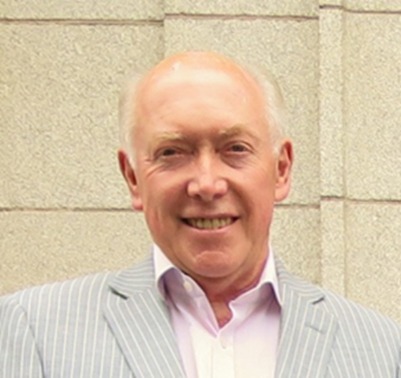
James Mc Laughlin(University College Dublin – Ireland)
James Mc Laughlin is an Emeritus Academic Member of the School of Physics, University College Dublin where, inter alia, he was leader of the Radon Research Group. He is the author of circa 140 scientific publications mostly in the radon field. He is a Fellow of the Institute of Physics (London) and has also been Visiting Professor at the Faculty of Medicine, University of Belgrade. In the mid 1980s he designed and carried out the first national Irish survey of indoor radon which identified for the first time high radon areas in Ireland. He has been a participant in a number of European Commission and World Health Organisation activities in the field of Indoor Air Quality. Over the years he has participated in several research projects funded by the European Commission most recently as leader of the Radon Risk Communication Work Package in the RADPAR (Radon Prevention and Remediation) Project (2005-2009). He was also Leader of the Radon Risk Communication Working Group of the World Health Organisation International Radon Project (2005-2009) and on a number of occasions has served as a consultant/technical expert to the IAEA (International Atomic Energy Agency) on radon topics. Recently (2011-2014) he has been a member of the ICRU (International Commission on Radiation Units) Report Committee on Measurement and Reporting of Radon Exposures. He is a Member of the Environmental Radioactivity Advisory Committee to the Radiological Protection Institute of Ireland and was a member of the Irish Government Advisory Expert Committee on the introduction of the Workplace Smoking Ban Legislation in 2004. His current interest is in the area of risk communication in the context of strategies to reduce the public health impact of radon exposure in Europe.
-
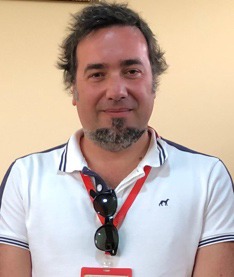
Paulo Pinto (Radosys Atlantic – Portugal)
Paulo Norte Pinto is the Managing Partner, Radosys Atlantic Lda based in Portugal. Paulo has worked for several years in the Natural Radioactivity Laboratory of the University of Coimbra, in Portugal, using different technologies and techniques, and co-designing the first radon mitigation projects in the country. In 2013 he co- founded the Radosys Atlantic, a spin-off company from the LRN and the Radosys. With activities in the Portuguese & Spanish speaking countries, and Africa, he has been responsible for the installation of several passive radon dosimetry laboratories, with local staff training.
-
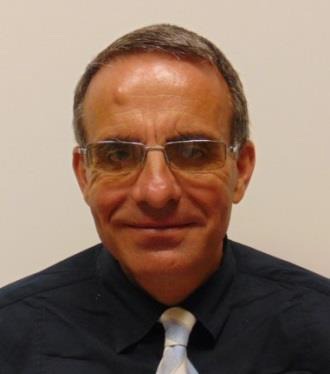
Dobromir Pressyanov (U. Sofia – Bulgaria)
Dobromir Pressyanov graduated nuclear physics in 1985 and worked as a health physicist in uranium industry and its health inspection till 1994. He acquired PhD in 1993 and DSc in 2013. Since 1994 Dr. Pressyanov works at Sofia University “St. Kliment Ohridski” where currently he is professor of physics (dosimetry and radiation protection). Most of his research (more than 120 publications and 4 patents) is related to radon and thoron. Particular topics that are worth to mention include retrospective measurements of radon and thoron (by CD/DVDs), organizing radon surveys in radon priority areas in Bulgaria, consultancy on mitigation of buildings. So far Dobromir Pressyanov has provided technical consultancy for mitigation of 24 buildings (most of them kindergartens and schools) in Bulgaria and have designed two radon prevention systems in new buildings (kindergartens). He was engaged as an expert in the International Radon Project of the World Health Organisation (2005-2008). In 2017 he served as Guest editor of special issues of Journal of Environmental Radioactivity and Radiation Protection Dosimetry, dedicated to radon. He has been head/member of organizing or scientific committees of international conferences and invited lecturer at conferences and institutions in different countries in Europe and North America. He is involved in national and international radon related projects and frequently invited to speak on radon on TV and radio programs in Bulgaria.
-
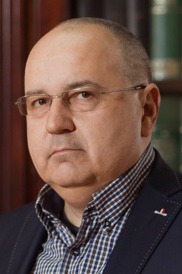
Vladimir Udovicic (Institute of Physics Belgrade – Serbia)
Vladimir Udovicic has Ph.D. in nuclear physics on the research focussed on light-ion induced nuclear reactions obtained by electrical discharges. After he completed Ph.D. in 2006, he started research work on radon topics: radon monitoring using active and passive devices, study connections of meteorological variables and radon concentrations variability using multivariate classification and regression methods, modelling of the indoor radon behaviour and radon policy, action plan and mapping. From 1996 he is permanently employed in the Institute of Physics Belgrade, currently at the position of Senior Research Associate and Head of Low-Background Laboratory for Nuclear Physics. From the beginning of the career, he worked on the national research projects of the Ministry of Science of the Republic of Serbia and international regional projects funded by IAEA as a counterpart for Serbia. From 2013, he is the chairman of the board of Serbian Radiation Protection and Nuclear Safety Agency, Serbian regulatory body in the field of radiation protection. From 2011, he is the member of the Executive Board of Society for Radiation Protection of Serbia and Montenegro.
-
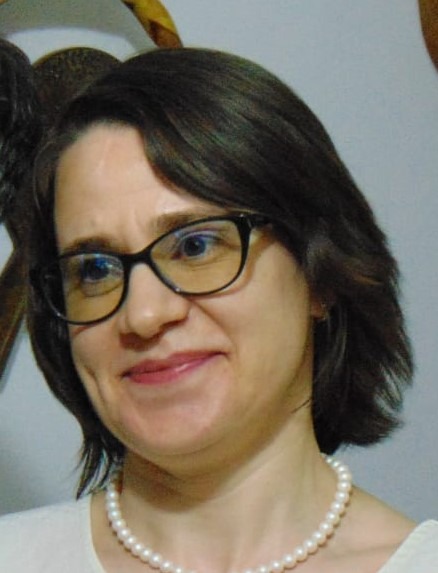
Bety-Denissa Burghele (Babeș-Bolyai University, Romania)
Bety-Denissa Burghele is a Senior Researcher with a PhD in the field of Environmental Sciences. Her expertise includes radon measurements and mitigations. She has published numerous scientific papers on radon and successfully implemented three national research projects as coordinator. She is a founding member of the European Radon Association and the vice-president of the Association of Radon Professionals from Romania. Her experience has been awarded nationally and internationally for relevant contributions to radon research. In 2018 she became a founding member of the LiRaCC laboratory, the first and most complex laboratory authorized to provide radon services for the Romanian public, where she holds the position of Technical Supervisor. In 2022 she started Radon Action SRL, the only radon mitigation company in Romania.
-
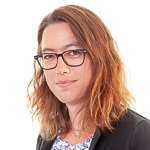
Valeria Gruber (AGES, Austria)
Valeria Gruber is a physicist and has been working in the radon field for almost 20 years now, already during her diploma thesis (radon in soil gas measurements) at the Technical University Vienna. Afterwards she was as a researcher and finished her Ph.D. (natural radioactivity in drinking water) at the BOKU University. From 2010 to 2013 Valeria was a post-doc at the Joint Research Centre of the European Commission, REM group, in the field of the European Atlas of Natural Radiation. Since 2013 she is working at the National Radon Centre of Austria, AGES, and was and is responsible of developing and monitoring the Austrian Radon Action Plan, the Austrian Radon map and delineation of radon priority areas. Valeria has been involved in various activities in the radon field and is familiar with the requirements and implementation process of the EU-BSS, both from a national and European perspective. In addition, she is part of international research projects – e.g. RadoNorm, traceRadon, MetroRadon and does expert work for international organisations (e.g. IAEA, UNSCEAR, EC); Valeria is a member of radiation protection professional bodies (e.g. EURADOS, FS, ÖVS) and a proud founding member of ERA.
-
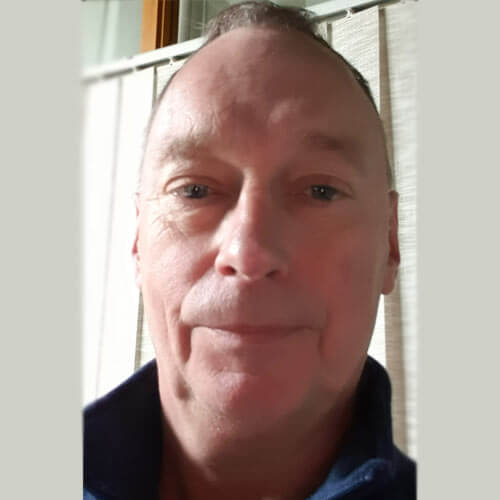
Gary Moss (TASL, UK)
Gary Moss is the managing Director of Track Analysis Systems ltd ( TASl) . Gary began his research career designing detectors for cosmic ray physics and medical imaging .Joining TASL in 1987, he started working on solid state nuclear track detectors and associated readout systems for physics and dosimetry purposes, he has been involved with with radon detection and dosimeter analysis for 30 years. He has been actively involved with the two radon bodies in the UK , the UK Radon Association and The Radon Council and internationally with COIRA before joining the ERA executive committee .
-
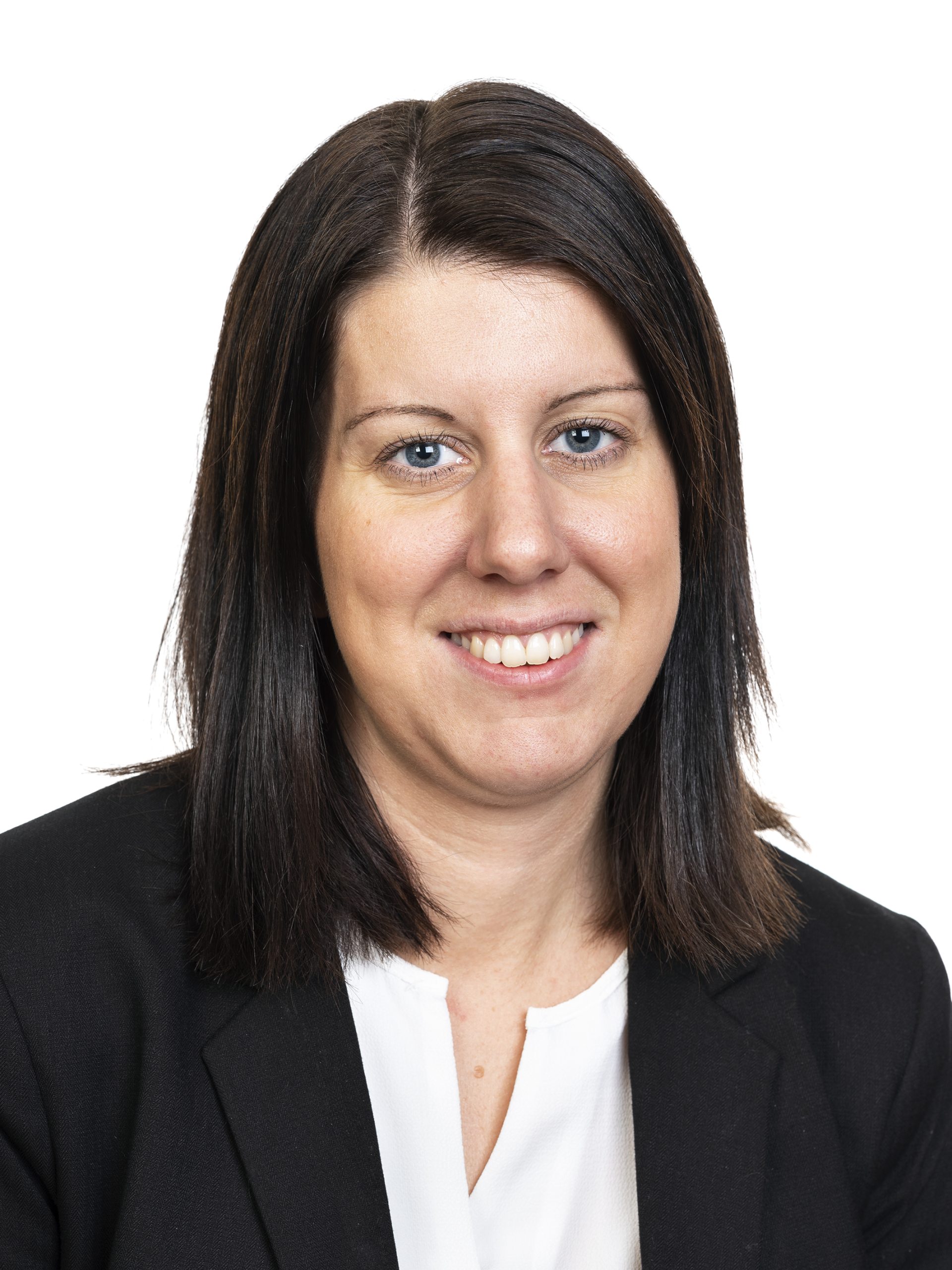
Monika Nordqvist (Eurofins Radon Laboratory, Sweden)
Monika Karlsson have been working in the radon industry for commercial laboratories, currently managing and leading Eurofins Radon Global Competence Center. She has a background in mathematics and physics. She has been working as a radon measurement specialist for 6 years before she become Production Manager for one of the biggest radon laboratory in the world. During her time as radon measurement specialist she developed new procedures for measurements and improved calibration routines together with Swedish Radiation Safety Authorities.
-
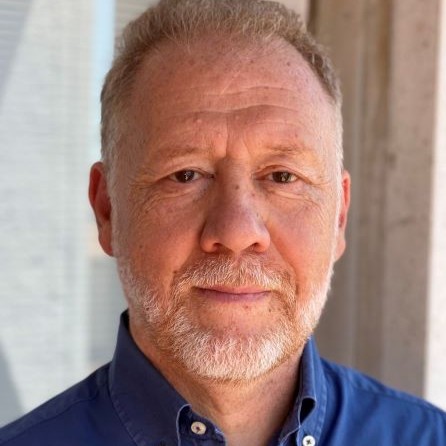
Antonio Angelo Parravicini (Mi.am S.r.l, Italy)
Antonio Parravicini has been dealing with radon since his degree in physics in 1989, thesis focused on radioactivity in geological faults lines. In 1994, after training at Milan University, he founded Mi.am. The company’s mission has always been to provide radon professionals with the best and most technologically advanced equipment. While running a business, he especially enjoys working in the field. In almost 30 years, in collaboration with various research institutes, he has developed new technical solutions for radon monitors and SSNTD reading systems. He has held training courses in public institutions and private companies and has contributed to several publications. In recent years he has gained a significant experience in radon mitigation. In 2020 he was one of the founders of ASSORADON, the Italian Association of Radon Professionals, of which he has the honour of being President.
-
The General Assembly is the senior organ of the Association. It shall consist of members of the different categories as described in section 2, who have duly paid their respective membership dues, if applicable. The General Assembly is responsible for:
- a. the acceptance of the Executive Committee’s annual reports
- b. the election and approval of the Executive Committee
- c. the dismissal of Executive Committee members
- d. the approval of the budget resolved by the Executive Committee and presented by the Secretary
- e. modification to the Statutes
- f. modification to the Code of Ethics
- g. dissolution of the Association
An Ordinary General Assembly shall take place every year. A Notice with the agenda, the date, time and location of any General Assembly shall be signed by the President and sent by the Executive Committee Secretary via electronic mail to all members of the Association no later than 1 month prior to the fixed date. Each ordinary member shall have one vote. Each company member shall have 2 votes per company, independent on the number of individual members belonging to that company. Decisions shall be made by simple majority vote. In the case of an equality of votes, the vote of the President or Vice-President in case of absence of the President, shall be decisive.
Below is a timeline of the development of ERA to date, along with future planned activities:
-
SEP 2023
IX ERA assembly and workshop (Prague, Czech Republic)
-
SEP 2022
VIII ERA assembly and workshop (Bergen, Norway)
-
OCTOBER 2021
VII ERA assembly and workshop (Fribourg, Switserland)
-
MARCH 2020
VI ERA assembly and workshop (Vienna, Austria)
-
SEPTEMBER 2019
V ERA assembly and workshop (Lugano, Switserland)
-
MAY 2018
IV ERA assembly and workshop (Sofia, 17th May)
-
MAY 2017
III ERA assembly and workshop (Ciudad Rodrigo, 28th – 29th April)
-
MAY 2015
II ERA assembly and workshop (Krakow, 29th May)
-
SEP 2014
I ERA assembly and workshop (Prague, 15th September)
-
SEP 2013
The first Executive Committee meetings happened: September in Prague and January in Brussels.
-
MAY 2013
1sr EARST General Assembly and workshop. The city of Bouillon held the first official events of the association: general assembly and workshop. The workshop’s content was the International and national radon regulations and strategies during the morning session. The afternoon session include two working groups: Harmonisation criteria from the new EU-BSS and Information and Training of radon technologists. The EARST general assembly selected the first Executive Committee of the association. It also changed the association’s name to ERA (European Radon Association)
-
APR 2013
Meeting in Paris during the celebration of the radon conference. Some amendments were discussed for both, statutes and code of ethics.
-
JAN 2013
EARST strategic meeting in Brussels. The former name of ERA was EARST and this meeting dealt with the need of having statutes, selection of EARST board and the first 1st EARST conference.
-
MAY 2011
Further conversations discussing the need of creating a radon association at the European level took place during the I Intercomparison exercise of natural radiation under field conditions carried out in Ciudad Rodrigo (Spain)
-
OCT 2008
The Swiss colleague, Georges-André Roserens, proposed a sort of European Association of radon at the ROOMS meeting in Meran (Italy)
The European Radon Association is a non- profit International Organisation registered under Belgian law (number 549.923.484). The European Radon Association (ERA) has been formed aimed at serving the interests of the European radon community. The first idea of creating ERA was discussed during the International Intercomparison Exercise carried out in Ciudad Rodrigo (Spain) in May 2011. Then, ERA’s constituent assembly was held in Bouillon in May 2013 and finally the association was registered in Belgium on 19th December 2013.
The Executive Committee (2022-2023)
-

Per Nilsson (Driftwood Consulting AB– Sweden)
Experienced radon expert with a demonstrated history of working in the environmental services industry. Skilled in Radiation Safety, Medical Devices, Sales, Customer Relationship Management (CRM), and Dosimetry. Strong business development skills.
-

Carmela Carpentieri (ISS – Italy)
Carmela Carpentieri graduated in physics at “Federico II” University in Naples in 2000, studied for her PHD in high energy physics at “Albert Ludwig” University in Freiburg and post-graduated in medical physics at Pisa University. Since 2009, she has been working as a researcher of the National Center for Radiation Protection and Computational Physics, within the Italian National Institute of Health (Istituto Superiore di Sanità – ISS). Her research activities cover radioactivity, both from natural and artificial sources, from a radioprotection point of view, with a strong focus on radon isotopes. The areas of interest include measurement protocols and techniques, dosimetry, epidemiology, risk assessment, remediation and prevention, policies and regulation. She is involved in several projects national and international and also in activities within the current Italian National Radon Action Plan, as well as in developing the new NRAP according to the requirements of the 2013/59/Euratom directive.
-

Boris Dehandschutter (FANC – Belgium)
Boris Dehandschutter is active in the field of radiation protection. The research topic of his PhD (in Geology, 2001) has been the structural evolution of sedimentary basins, using among others environmental radioactivity measurements and mapping. After post-doctoral research on the geological aspects of radioactive waste disposal (fracture development and fracture permeability of argillaceous sediments), he coordinated several international projects related to natural radioactivity and its environmental impact. Since 2007 he works at the Belgian radiation protection authority (FANC) on the topics of natural radioactivity (NORM and radon). He is responsible for the national radon programme of Belgium, including radon risk mapping, radon measurement campaigns in dwellings and workplaces, radon awareness activities, training and development of regulations regarding radon.
-

José - Luis Gutiérrez (Radonova laboratories AB – Sweden)
José – Luis Gutiérrez Villanueva is specialist radon measurement advisor at Radonova Laboratories AB (Sweden). He is a PhD. on Physics with the Thesis entitled “Radon concentrations in air, soil and water in a granitic area: instrumental development and measurements“. His research involves radon gas and natural radioactivity as well as monitoring of radioactivity at steel factories. He has expertise on metrology techniques for natural and artificial radioactivity such as gamma spectrometry, liquid scintillation counting and measurement of radon gas both passive and active methods (air, soil and water).
-

Bernard Collignan (CSTB – France)
Bernard Collignan is a Senior Research Engineer, Ph-D in the field of Fluid Mechanics and Energy. He works at the Centre Scientifique et Technique du Bâtiment (CSTB) since 1996, initially in thermal and ventilation of buildings and now in the field of Indoor Air Quality. He is involved for several years in the field of management of the impact of soil gaseous pollutants on Indoor Air Quality: industrial pollution (VOCs) or natural (radon). His work includes the development of models to study the transfer of soil gaseous pollutants to indoor environments for the characterization of indoor exposures, the development and the design of solutions to protect buildings from these pollutants, and in a more general way, as scientific and technical support for public authorities in the management of these issues and the dissemination of information to building professionals and users.
-

Maria Hansen (GM Scientific- UK))
Maria Hansen is the Director of GM Scientific. Maria has a PhD in particle physics, she ventured into the commercial side of passive track etch measurements. She worked for a spin-off company from Bristol university until last year, manufacturing CR-39, selling automated analysis equipment and setting up and running a radon measurement service. She has since been continuing the work with measurement laboratories, training staff, installing and maintaining equipment and provided equipment and materials when required. She has an interest in improving the materials used in the passive track etch technology to ultimately improve the measurement capability of these types of detectors to ensure the data used in research is as good as possible and the uncertainties minimised. Maria has been involved with the two radon bodies in the UK over the years; the UK Radon Association and The Radon Council before joining the ERA executive committee in 2017.
-

James Mc Laughlin(University College Dublin – Ireland)
James Mc Laughlin is an Emeritus Academic Member of the School of Physics, University College Dublin where, inter alia, he was leader of the Radon Research Group. He is the author of circa 140 scientific publications mostly in the radon field. He is a Fellow of the Institute of Physics (London) and has also been Visiting Professor at the Faculty of Medicine, University of Belgrade. In the mid 1980s he designed and carried out the first national Irish survey of indoor radon which identified for the first time high radon areas in Ireland. He has been a participant in a number of European Commission and World Health Organisation activities in the field of Indoor Air Quality. Over the years he has participated in several research projects funded by the European Commission most recently as leader of the Radon Risk Communication Work Package in the RADPAR (Radon Prevention and Remediation) Project (2005-2009). He was also Leader of the Radon Risk Communication Working Group of the World Health Organisation International Radon Project (2005-2009) and on a number of occasions has served as a consultant/technical expert to the IAEA (International Atomic Energy Agency) on radon topics. Recently (2011-2014) he has been a member of the ICRU (International Commission on Radiation Units) Report Committee on Measurement and Reporting of Radon Exposures. He is a Member of the Environmental Radioactivity Advisory Committee to the Radiological Protection Institute of Ireland and was a member of the Irish Government Advisory Expert Committee on the introduction of the Workplace Smoking Ban Legislation in 2004. His current interest is in the area of risk communication in the context of strategies to reduce the public health impact of radon exposure in Europe.
-

Paulo Pinto (Radosys Atlantic – Portugal)
Paulo Norte Pinto is the Managing Partner, Radosys Atlantic Lda based in Portugal. Paulo has worked for several years in the Natural Radioactivity Laboratory of the University of Coimbra, in Portugal, using different technologies and techniques, and co-designing the first radon mitigation projects in the country. In 2013 he co- founded the Radosys Atlantic, a spin-off company from the LRN and the Radosys. With activities in the Portuguese & Spanish speaking countries, and Africa, he has been responsible for the installation of several passive radon dosimetry laboratories, with local staff training.
-

Dobromir Pressyanov (U. Sofia – Bulgaria)
Dobromir Pressyanov graduated nuclear physics in 1985 and worked as a health physicist in uranium industry and its health inspection till 1994. He acquired PhD in 1993 and DSc in 2013. Since 1994 Dr. Pressyanov works at Sofia University “St. Kliment Ohridski” where currently he is professor of physics (dosimetry and radiation protection). Most of his research (more than 120 publications and 4 patents) is related to radon and thoron. Particular topics that are worth to mention include retrospective measurements of radon and thoron (by CD/DVDs), organizing radon surveys in radon priority areas in Bulgaria, consultancy on mitigation of buildings. So far Dobromir Pressyanov has provided technical consultancy for mitigation of 24 buildings (most of them kindergartens and schools) in Bulgaria and have designed two radon prevention systems in new buildings (kindergartens). He was engaged as an expert in the International Radon Project of the World Health Organisation (2005-2008). In 2017 he served as Guest editor of special issues of Journal of Environmental Radioactivity and Radiation Protection Dosimetry, dedicated to radon. He has been head/member of organizing or scientific committees of international conferences and invited lecturer at conferences and institutions in different countries in Europe and North America. He is involved in national and international radon related projects and frequently invited to speak on radon on TV and radio programs in Bulgaria.
-

Vladimir Udovicic (Institute of Physics Belgrade – Serbia)
Vladimir Udovicic has Ph.D. in nuclear physics on the research focussed on light-ion induced nuclear reactions obtained by electrical discharges. After he completed Ph.D. in 2006, he started research work on radon topics: radon monitoring using active and passive devices, study connections of meteorological variables and radon concentrations variability using multivariate classification and regression methods, modelling of the indoor radon behaviour and radon policy, action plan and mapping. From 1996 he is permanently employed in the Institute of Physics Belgrade, currently at the position of Senior Research Associate and Head of Low-Background Laboratory for Nuclear Physics. From the beginning of the career, he worked on the national research projects of the Ministry of Science of the Republic of Serbia and international regional projects funded by IAEA as a counterpart for Serbia. From 2013, he is the chairman of the board of Serbian Radiation Protection and Nuclear Safety Agency, Serbian regulatory body in the field of radiation protection. From 2011, he is the member of the Executive Board of Society for Radiation Protection of Serbia and Montenegro.
-

Bety-Denissa Burghele (Babeș-Bolyai University, Romania)
Bety-Denissa Burghele is a Senior Researcher with a PhD in the field of Environmental Sciences. Her expertise includes radon measurements and mitigations. She has published numerous scientific papers on radon and successfully implemented three national research projects as coordinator. She is a founding member of the European Radon Association and the vice-president of the Association of Radon Professionals from Romania. Her experience has been awarded nationally and internationally for relevant contributions to radon research. In 2018 she became a founding member of the LiRaCC laboratory, the first and most complex laboratory authorized to provide radon services for the Romanian public, where she holds the position of Technical Supervisor. In 2022 she started Radon Action SRL, the only radon mitigation company in Romania.
-

Valeria Gruber (AGES, Austria)
Valeria Gruber is a physicist and has been working in the radon field for almost 20 years now, already during her diploma thesis (radon in soil gas measurements) at the Technical University Vienna. Afterwards she was as a researcher and finished her Ph.D. (natural radioactivity in drinking water) at the BOKU University. From 2010 to 2013 Valeria was a post-doc at the Joint Research Centre of the European Commission, REM group, in the field of the European Atlas of Natural Radiation. Since 2013 she is working at the National Radon Centre of Austria, AGES, and was and is responsible of developing and monitoring the Austrian Radon Action Plan, the Austrian Radon map and delineation of radon priority areas. Valeria has been involved in various activities in the radon field and is familiar with the requirements and implementation process of the EU-BSS, both from a national and European perspective. In addition, she is part of international research projects – e.g. RadoNorm, traceRadon, MetroRadon and does expert work for international organisations (e.g. IAEA, UNSCEAR, EC); Valeria is a member of radiation protection professional bodies (e.g. EURADOS, FS, ÖVS) and a proud founding member of ERA.
-

Gary Moss (TASL, UK)
Gary Moss is the managing Director of Track Analysis Systems ltd ( TASl) . Gary began his research career designing detectors for cosmic ray physics and medical imaging .Joining TASL in 1987, he started working on solid state nuclear track detectors and associated readout systems for physics and dosimetry purposes, he has been involved with with radon detection and dosimeter analysis for 30 years. He has been actively involved with the two radon bodies in the UK , the UK Radon Association and The Radon Council and internationally with COIRA before joining the ERA executive committee .
-

Monika Nordqvist (Eurofins Radon Laboratory, Sweden)
Monika Karlsson have been working in the radon industry for commercial laboratories, currently managing and leading Eurofins Radon Global Competence Center. She has a background in mathematics and physics. She has been working as a radon measurement specialist for 6 years before she become Production Manager for one of the biggest radon laboratory in the world. During her time as radon measurement specialist she developed new procedures for measurements and improved calibration routines together with Swedish Radiation Safety Authorities.
-

Antonio Angelo Parravicini (Mi.am S.r.l, Italy)
Antonio Parravicini has been dealing with radon since his degree in physics in 1989, thesis focused on radioactivity in geological faults lines. In 1994, after training at Milan University, he founded Mi.am. The company’s mission has always been to provide radon professionals with the best and most technologically advanced equipment. While running a business, he especially enjoys working in the field. In almost 30 years, in collaboration with various research institutes, he has developed new technical solutions for radon monitors and SSNTD reading systems. He has held training courses in public institutions and private companies and has contributed to several publications. In recent years he has gained a significant experience in radon mitigation. In 2020 he was one of the founders of ASSORADON, the Italian Association of Radon Professionals, of which he has the honour of being President.
-
The General Assembly is the senior organ of the Association. It shall consist of members of the different categories as described in section 2, who have duly paid their respective membership dues, if applicable. The General Assembly is responsible for:
- a. the acceptance of the Executive Committee’s annual reports
- b. the election and approval of the Executive Committee
- c. the dismissal of Executive Committee members
- d. the approval of the budget resolved by the Executive Committee and presented by the Secretary
- e. modification to the Statutes
- f. modification to the Code of Ethics
- g. dissolution of the Association
An Ordinary General Assembly shall take place every year. A Notice with the agenda, the date, time and location of any General Assembly shall be signed by the President and sent by the Executive Committee Secretary via electronic mail to all members of the Association no later than 1 month prior to the fixed date. Each ordinary member shall have one vote. Each company member shall have 2 votes per company, independent on the number of individual members belonging to that company. Decisions shall be made by simple majority vote. In the case of an equality of votes, the vote of the President or Vice-President in case of absence of the President, shall be decisive.
Below is a timeline of the development of ERA to date, along with future planned activities:
-
SEP 2023
IX ERA assembly and workshop (Prague, Czech Republic)
-
SEP 2022
VIII ERA assembly and workshop (Bergen, Norway)
-
OCTOBER 2021
VII ERA assembly and workshop (Fribourg, Switserland)
-
MARCH 2020
VI ERA assembly and workshop (Vienna, Austria)
-
SEPTEMBER 2019
V ERA assembly and workshop (Lugano, Switserland)
-
MAY 2018
IV ERA assembly and workshop (Sofia, 17th May)
-
MAY 2017
III ERA assembly and workshop (Ciudad Rodrigo, 28th – 29th April)
-
MAY 2015
II ERA assembly and workshop (Krakow, 29th May)
-
SEP 2014
I ERA assembly and workshop (Prague, 15th September)
-
SEP 2013
The first Executive Committee meetings happened: September in Prague and January in Brussels.
-
MAY 2013
1sr EARST General Assembly and workshop. The city of Bouillon held the first official events of the association: general assembly and workshop. The workshop’s content was the International and national radon regulations and strategies during the morning session. The afternoon session include two working groups: Harmonisation criteria from the new EU-BSS and Information and Training of radon technologists. The EARST general assembly selected the first Executive Committee of the association. It also changed the association’s name to ERA (European Radon Association)
-
APR 2013
Meeting in Paris during the celebration of the radon conference. Some amendments were discussed for both, statutes and code of ethics.
-
JAN 2013
EARST strategic meeting in Brussels. The former name of ERA was EARST and this meeting dealt with the need of having statutes, selection of EARST board and the first 1st EARST conference.
-
MAY 2011
Further conversations discussing the need of creating a radon association at the European level took place during the I Intercomparison exercise of natural radiation under field conditions carried out in Ciudad Rodrigo (Spain)
-
OCT 2008
The Swiss colleague, Georges-André Roserens, proposed a sort of European Association of radon at the ROOMS meeting in Meran (Italy)
Our Mission
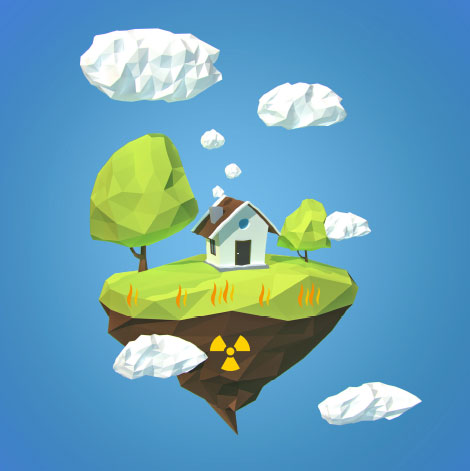
The Association objectives are:
- To promote and to participate in activities to reduce radon risk within the population, recognizing radon as the second cause for lung cancer
- To promote public awareness of radon risk, radon measurement, radon mitigation and radon preventative techniques.
- To ensure/develop/adopt quality standards in radon measurement, radon mitigation and radon prevention in new constructions.
- To provide an effective partnership between radon professionals in the field and other interested public and private stakeholders.
- To serve as a consultative body with regards to laws and regulations concerning radon. To organize an annual Radon conference or workshop combining scientific presentations and technical exhibitions from companies working with radon.
- Strive for the highest standard of fairness and integrity
The Association is unselfish in its activity. In their use for the public benefit, its funds may only be utilised for purposes in accordance with the statutes. It may not favour any person by means of expenditures which are foreign to the objectives of the Association.
ERA Publicity Leaflet
An information leaflet with basic details about ERA has been produced in several different languages. This leaflet can be distributed at meetings and events to give a general introduction to ERA’s aims and objectives. Below you can find the leaflet in different languages:
